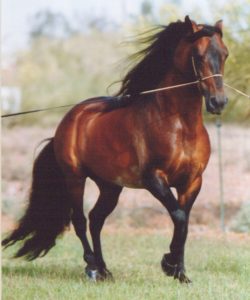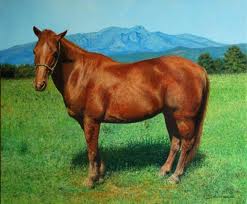 HISTORY OF THE CUBAN EQUINE RACE. THE FIRST HORSES.
HISTORY OF THE CUBAN EQUINE RACE. THE FIRST HORSES.
All the investigations carried out in our continent prove that the horse did not exist in these lands at the arrival of the Spaniards. At that time, the Iberian horse, especially the Andalusian horse, was considered the best in Europe, in whose formation the horses carried there by the Arabs had influenced, whose domination lasted more than seven centuries.
Hence, the preparation of Christopher Columbus’s first trip to our lands coincided with the latest struggles against Arab rule in Granada, Spain.
According to existing documents in the Archive of the Indies of Seville, the horses brought in the expedition of Columbus were of proven physical strength and came from Seville, a city where the members of the crews were also recruited.
Thus, we can assure that the first horses entered America through the island of Hispaniola, that is, what Santo Domingo and Haiti are today, where they were taken by Columbus in 1493.
Years later, in 1511, Diego Velázquez introduced them to Cuba and although there were few animals enough to sow panic among the natives. As when Pánfilo de Narváez was ordered to take the Indian population of Bayamo with 30 men and a single mare covered with bells that were mounted by him.
From the mix of breeds in Cuba came a specimen that is characterized by its fine and gualdrapeada gait, it is a strong animal with an elegant appearance. The so-called Cuban Paso horse has a head that is proportional to its body and has a straight profile, although occasionally it can be slightly convex or slightly concave. The forehead is wide, the ears are medium, well implanted and mobile
The neck is strong, medium length and well inserted at both ends. The cross slightly high, muscular and the back straight and strong back.
In visit to Cuba by the American writer Samuel Hazard in 1870, he could appreciate the quality of our horses at that time. In his book Cuba a pluma y lápiz, he states that:
“The horse of Cuba is a magnificent animal, short body, solid and well formed, with strong limbs, beautiful and intelligent eyes and for long days there is no better one.These horses have a thick neck, strong mane and thick tails and seeing them in the savannahs where they are raised, before they are beloved, present a beautiful appearance of wild horses.Their march is something peculiar, exclusive of them and in a well-trained Cuban horse, even the one that has never ridden, can do it without fear ” .
The largest production of equines of this breed in Cuba are found in the ranch La Loma of Granma province. These breeds require a refreshing blood with Spanish horses, breed that gave birth, or with the Criollo Continental horse and fine-riding stallions from America, which also come from the Spanish horse and have similar morphological characteristics to Cuban horses .
In Cuba the huntsmen prefer Trote’s Criollo horse for its work in the cattle ranch, but the peasants that require a horse as a means of transport better estimate the Cubano de Paso, since they travel greater distances in less time, they are more comfortable and very coveted by rural women who also need this service.
 HISTORIA DE LA RAZA EQUINA CUBANA. LOS PRIMEROS CABALLOS.
HISTORIA DE LA RAZA EQUINA CUBANA. LOS PRIMEROS CABALLOS.
Todas las investigaciones realizadas en nuestro continente prueban que el caballo no existía en estas tierras a la llegada de los españoles. Por esa época, el caballo ibérico, sobre todo el andaluz, era considerado el mejor de Europa, en cuya formación habían influido los caballos llevados allí por los árabes, cuya dominación duró más de siete siglos.
De ahí que la preparación del primer viaje de Cristóbal Colón a nuestras tierras coincidiera con las últimas luchas contra el dominio árabe en Granada, España.
Según documentos existentes en el Archivo de Indias de Sevilla los caballos traídos en la expedición de Colón eran de probada fortaleza física y procedían de Sevilla, ciudad donde también fueron reclutados los miembros de las tripulaciones.
Así, podemos asegurar que los primeros caballos entraron a América por la isla la Española, o sea, lo que es hoy Santo Domingo y Haití, a donde fueron llevados por Colón en 1493.
Años después, en 1511, Diego Velázquez los introducía en Cuba y aunque venían pocos animales bastaba para sembrar el pánico entre los nativos. Como cuando Pánfilo de Narváez se le ordenó tomar la población india de Bayamo con 30 hombres y una sola yegua cubierta de cascabeles que era montada por él.
De la mezcla de razas en Cuba salio un ejemplar que se caracteriza por su marcha fina y gualdrapeada, es un animal fuerte y de apariencia elegante. El llamado caballo de paso cubano tiene la cabeza un tamaño proporcional a su cuerpo, presenta un perfil recto, aunque en ocasiones puede ser ligeramente convexo o ligeramente cóncavo. La frente es ancha, las orejas son medianas, bien implantadas y móviles
El cuello es fuerte, de mediana longitud y bien insertado en ambos extremos. La cruz ligeramente alta, musculosa y el dorso lomo recto y fuerte.
En visita realizada a Cuba por el escritor norteamericano Samuel Hazard en el año 1870, pudo apreciar la calidad de nuestros caballos en esa época. En su libro Cuba a pluma y lápiz, plantea que:
“El caballo de Cuba es un magnífico animal, de cuerpo corto, sólido y bien formado, con fuertes miembros, ojos bellos e inteligentes y para largas jornadas no hay uno mejor. Estos caballos tienen cuello grueso, fuertes crines y colas espesas y viéndolas en las sabanas donde se crían, antes de que se les amaestren, presentan una bella apariencia de caballos salvajes. Su marcha es algo peculiar, exclusiva de ellos y en un buen amaestrado caballo cubano, aún el que nunca haya montado, puede hacerlo sin temor”.
La mayor producción de equinos de esta raza en Cuba se encuentran en el rancho La Loma de la provincia Granma. Estas razas requieren de un refrescamiento de la sangre con caballos españoles, raza que le dio origen, o con el caballo Criollo Continental y sementales de marcha fina procedentes de América, las cuales también proceden del caballo español y tienen características morfológicas similares a los caballos cubanos.
En Cuba los monteros prefieren el caballo Criollo de Trote para su trabajo en la ganadería, pero los campesinos que requieren de un caballo como medio de transporte estiman mejor al Cubano de Paso, ya que recorren mayores distancias en menor tiempo, son más cómodos y muy codiciados por la mujeres de campo que necesitan también este servicio.
Agencies/Radio Encyclop./ Juan B. Rodriguez/Ecured/ Internet Photos/ Arnoldo Varona/ TheCubanHistory.com
THE CUBAN HISTORY, HOLLYWOOD.






